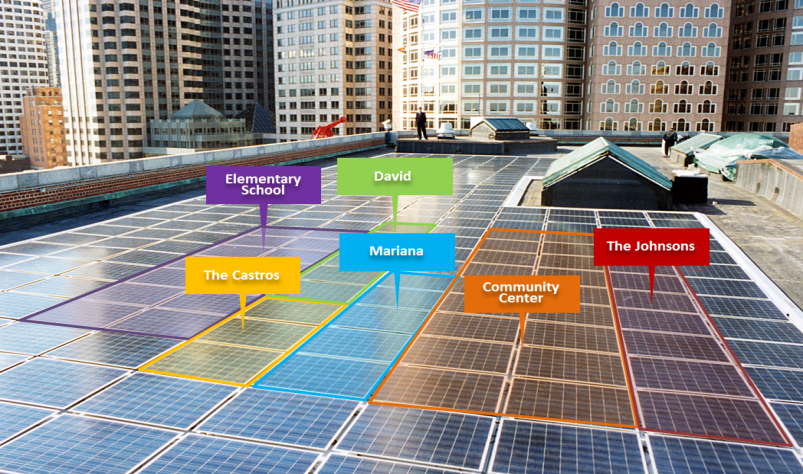From: CleanTechnica
What is community solar?
Community solar is sometimes referred to as “shared solar” or “solar gardens.” According to the National Renewable Energy Laboratory (NREL), it is a distributed solar deployment model that allows customers to buy or lease part of a larger off-site shared solar photovoltaic (PV) system. Shared solar falls under the community solar umbrella, allowing multiple participants to benefit directly from the energy produced by one solar array.
Many people in the U.S. want to power their homes with solar power, but cannot do so because they rent, live in multi-unit homes, don’t have the best roof sun angles, or other reasons. But these folks also have a solar option: community solar. With a range of panels installed off-site in a sunny location, you can share your local solar installation with other community users even if your residence does not have equipment that supports solar panels. Everyone who participates gets an electricity bill based on their share of the electricity they produce.
Community solar expands access to solar for all, especially low- and middle-income customers most affected by lack of access, as no up-front investment is required.
NREL described in a May 2020 webinar how cumulative community solar power generation has grown by approximately 130% year-over-year since 2010, or more than doubled on average year-over-year. Part of the reason is that over time, the size of the project has grown. Among electric cooperatives, utilities (POUs), and municipal utilities, deployment of relatively small-scale projects was also strong, with more than 320 cooperative and municipal utility projects deployed.
The State of Community Solar in the U.S.
Community solar is one of the fastest growing segments of the U.S. solar PV market. U.S. market conditions as of May 2020:
> Community solar projects in 39 states and Washington, D.C..
> 20 states, as well as Washington, D.C., have policies to support community solar.
> Community solar projects account for 2,083 megawatt alternating current (MW-AC) of total installed capacity.
> Approximately 88% of the total market is concentrated in the top 10 states, with Minnesota and Massachusetts leading the way with more than 560 MW of AC installed and more than 400 MW of AC installed, respectively.
Community solar offers the same benefits as any other renewable energy project – it benefits the environment, provides a diverse energy supply, stimulates economic development and creates new jobs. It’s a win-win for communities across America.
Tina Casey wrote in April about the DOE’s relaunched community solar program to ensure every home and business in the U.S. has access to renewable energy by 2025. FPL said more than 120,000 households and small businesses have expressed interest in participating in its SolarTogether program. The Southern Clean Energy Alliance and Vote Solar are also directly involved in promoting this community solar initiative.
The Institute for Local Self-Reliance is a national research and advocacy organization that helps the American people build an economy driven by local priorities and responsible for people and the planet, with quarterly updates of state community solar programs. They say the community solar program will continue to grow and the overall scale will continue to expand.



